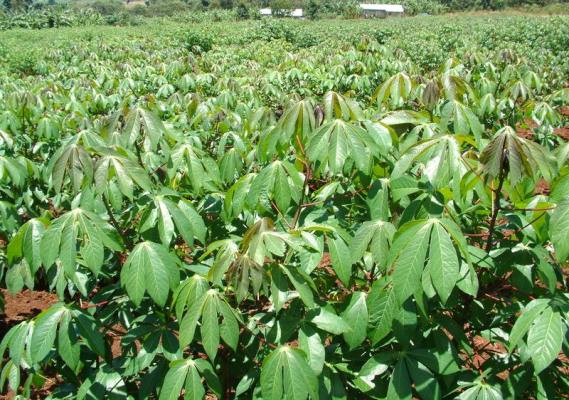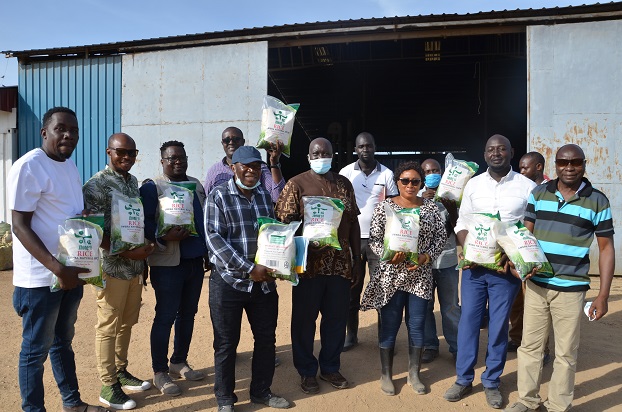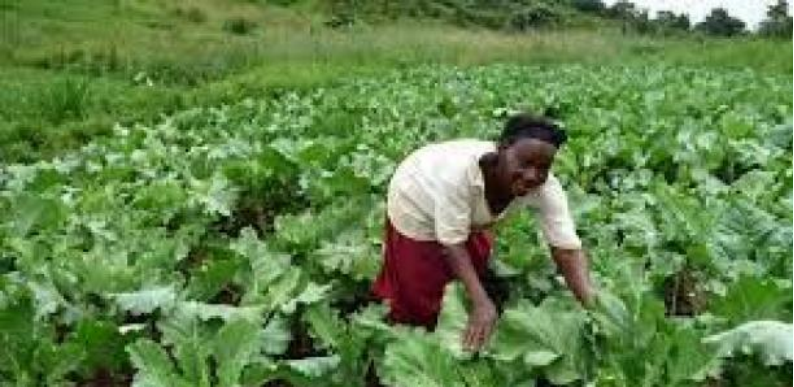Farmers in Teso are embracing new varieties
Farmers in Teso sub region are embracing new cassava varieties after registering low yields in NASE 3, an old cassava variety that has supported the region for more than two decades popularly known in the sub-region as Nigeria.
NASE 3 also known as Migera but popularly called Nigeria in Teso, was introduced in the 1990s following the 1994/95 food crisis that devastated the region. ‘Nigeria’ came in handy as its tubers developed faster and many farmers embraced the variety which proved its worth with time.
“When Nigeria was introduced, some people rejected it following rumours that it kills,” recalls Stella Agwang, a farmers in Opiya, Kadungulu Sub County in Serere district. “Some people had because of the biting hunger at the time rushed to uproot and eat it but the cassava was not ready and became poisonous. But we were told to keep it in the garden for at least one year before use and when people learnt that, everybody went for Nigeria because of its high yields.”
The mother of eight children says she has never seen any cassava variety with such high yields and disease resistance like Migera. According to Agwang, Migera has been their key food support at home since it stayed in the garden longer.
According to the Consultative Group on International Agricultural Research- CGIAR, a global partnership that unites organizations engaged in research for a food secure future, NASE 3 has high adaptation levels of 77 percent in central Uganda. CGIAR indicates that NASE 3 has inground storability and diversity in forms of utilization, among other advantages.
But the farmers are shifting away from Migera following its low yields and susceptibility to diseases like Cassava Brown Streak and Cassava Mosaic viruses, among others. The new cassava varieties include NAROCast 1, NASE 14 and NASE 19.
Moses Eladu, a farmer from Obaki Village in Kamuda sub county in Soroti district says that whereas Migera has sustained his family for long, its productivity has deteriorated. He explains that the old cassava variety is now infested with white flies, rots in the garden, something he notes was exposing his household to starvation.
John William Ejiet, the District Production and Marketing officer in Kapelebyong says cassava is the major enterprise supporting households in the district adding that they had to move faster to help farmers acquire new cassava varieties.
Ejiet says that with the support from Operation Wealth Creation, the district received more than 2,000 bags of Narocast 1 cassava variety in May, which he notes have already been planted.
Moses Okello Eceku, the District Agricultural Officer in Soroti says that although the shift to the new improved cassava varieties has exposed some farmers to hunger, a majority who adopted new cassava varieties are reaping big. He explains that unlike Migera, which produces below 20 tons of cassava per hectare, Narocast 1 now fetches between 35-45 tons per hectare.
But Deborah Apiny, another cassava grower in Pingire sub county in Serere district is worried about the newly promoted cassava variety because it doesn’t stay long in the garden.
“At the moment, I buy cassava to feed my family of seven people,” she said. “Whereas the new cassava variety is fast maturing, it doesn’t stay long in the garden. We planted two hectares in 2019 but by the end of last year, all the remaining cassava had rotten in the garden. This is really different from Nigeria that we used to plant.”
In Teso, cassava is the common staple food found in almost every household. Besides its domestic use as food, the community also relies on cassava for income.
Joseph Maurice Enabu, a nutritionist at Soroti Regional Referral Hospital says Migera, like any other cassava variety has been rich with calories which are required for energy in the body. He, however, cautions the community against eating premature cassava because of the health risks involved.





